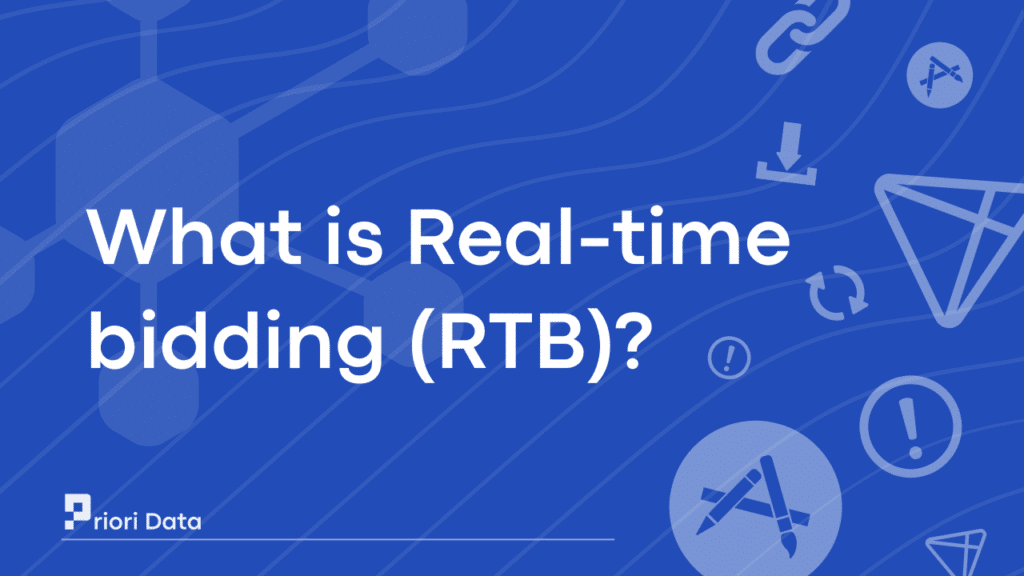Real-time bidding is an auction setting that allows buying and selling of digital ads in real time. It is a form of programmatic advertising that helps advertisers and publishers in many ways.
While traditional advertising involves developing requests for proposals and quotes and conducting negotiations, real-time bidding hastens it, giving more control over the entire process.
When advertisers visit an app or website, a real-time auction is conducted. As an advertiser’s bid wins, it gets an ad space immediately and starts displaying on the publisher‘s property (website or mobile app).

How does real-time bidding work?
RTB process takes the support of platforms like Supply Side Platforms, Demand Side Platforms, and Ad Exchanges.
Let’s get an insight into these three and know how they help facilitate real-time bidding.
Supple Side Platforms (SSP)
SSP is programmatic software for publishers (suppliers) that aids in the sales of their advertising impressions.
It connects the suppliers with demand-side platforms, different ad exchanges, and ad networks and exhibits impressions to a greater pool of potential customers for sale.
In this way, it allows suppliers to set the best bidding range and thus maximize the revenue.
Demand Side Platform (DSP)
DSP is programmatic software for advertisers. It helps them buy automated and centralized media from different reliable sources.
When advertisers seek the right inventory for their ads, DSP helps explore and buy them to help reach the right audience at the right time at a cost-effective price.
Ad Exchange
When an advertiser wants to seal a deal with a publisher’s ad inventory, the Ad Exchange facilitates them to transact.
Ad Exchange is an online marketplace where entities from demand-side platforms, the advertisers, perform real-time bidding on multiple inventories from supply-side platforms, the publishers.
Apart from bidding, Ad Exchange helps advertisers gain visibility irrespective of where their ads will exhibit.
The working module of real-time bidding can be understood as follows:
1. Sending the bid request– As a user visit a website, a bid request is sent on Ad Exchange. The bid contains information such as:
- Demographic data
- Location
- Brower history
2. Passing the bid– Now, the role of Ad Exchange comes to play. It passes the list of buyers or advertisers interested in the ad impression along with their bid requests to the website user.
The buyer with the highest bidding wins the impression, and its ad gets placed in front of the site user.
3. Repetition– This entire process repeats and is so fast that receiving the bid request and placing or serving the ad takes place within 100 milliseconds.
Thus real-time bidding creates an efficient advertising ecosystem in the online platform.
Benefits of Real-Time Bidding
Real-time bidding is helpful for both publishers and advertisers in multiple ways.
Benefits for Publishers
1. Better pricing– Since the highest bid amount delivers the impression, publishers get more revenue for their inventory. Using supply-side platforms, a publisher makes the most out of real-time bidding.
2. Increased value of remnant inventory– Monetizing as much inventory as possible is the aim of every publisher. With real-time bidding, inventory that was once considered unworthy or non-monetized can be used by advertisers based on their target audience.
Many publishers reported that real-time bidding also helps increase the value of their remnant inventory.
3. Control over the inventory– to take part in real-time bidding, publishers have to involve a Supply Side Platform (SSP). It gives them better control over their inventory in terms of pricing and buyers.
4. Better understanding of audience– When you understand the mood and interest of your target audience, increasing the revenue becomes easy. With real-time bidding, publishers can understand their audience better and determine who interests advertisers the most and brings the best prices.
Thus, it helps publishers get valuable insight and expand their sites into profitable segments. It aids in meeting the demand of advertisers and increasing the value of inventory.
5. Private marketplaces for premium publishers– Private marketplaces give even better control over the inventory and help publishers sell their stock with more transparency.
6. Improved performance of direct sales– Publishers may want to sell their inventory directly to some potential advertisers. It is when real-time bidding gives useful insight into the profitable inventory segments to make the most out of the deal.
Once the publisher determines the best inventory with respect to the advertiser, it can offer it directly to the interested advertisers at the best deal.
Benefits for Advertisers
1. Eliminates risk– Real-time bidding makes targeting very focused as inventory is purchased based on impression. It implies that there is no need to buy inventory in bulk and waste money on irrelevant visitors.
The efficiency of every campaign can be further improved by using advanced tools like bid forecasting and frequency capping. They help advertisers check, test and predict different campaign variables.
2. Better management of campaigns– RTB helps advertisers manage ad campaigns in real-time and thus adjust bids. It helps them improve their results and stay on top of results.
3. Improved knowledge– RTB helps improve marketing strategies by allowing advertisers to understand their consumers. Thus, they can take a strategic approach to improve their campaign’s performance with the impression data.
4. Brand Protection– For an advertiser, it is essential to maintain the dignity of its brand. Therefore, preventing the ads from showing on some illicit page or website is important. With RTB, advertisers can be specific about where to promote their products and services.






